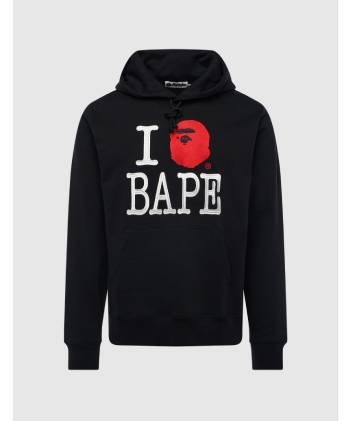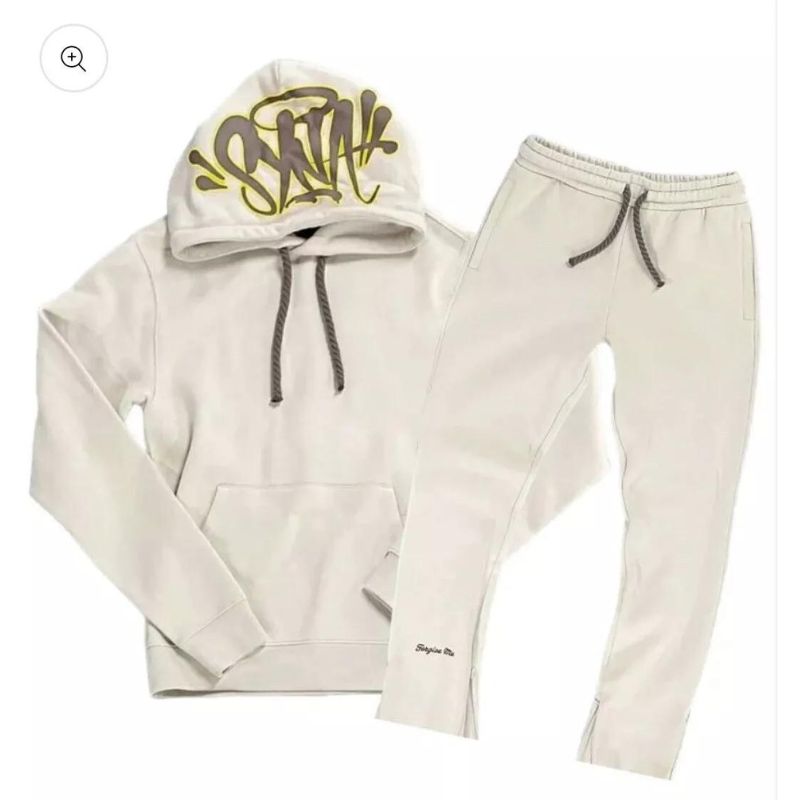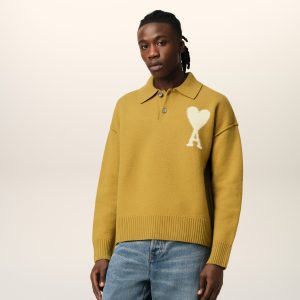Introduction to Bape Clothing
Bape, short for A Bathing Ape, is not just a clothing brand—it’s a lifestyle, a culture, and an identity deeply rooted in the world of streetwear. Founded in 1993 in Tokyo, Japan, Bape Clothing quickly gained a cult following for its eccentric designs, bold colors, and unapologetically loud fashion statements. The brand was the brainchild of Nigo (real name: Tomoaki Nagao), who used his vision and influences from music, pop culture, and fashion to create something the world had never seen before.
Bape is recognized for its standout pieces such as shark hoodies, Bapesta sneakers, and its signature camouflage patterns. But it’s more than just the designs—it’s the aura of exclusivity that makes it so sought after. Unlike fast fashion brands, Bape operates on limited drops, meaning if you miss a release, you’re likely stuck paying resale prices on the secondary market.
But what makes Bape pleasing? It’s the perfect fusion of Japanese creativity with global urban style. Each piece feels like art—crafted with intention, detail, and a story behind it. Wearing Bape isn’t just about flexing a brand name; it’s about being part of a movement.
Why is Bape Considered Iconic in Streetwear?
Bape didn’t just join the streetwear scene—it helped define it. Back in the ’90s and early 2000s, streetwear was more of an underground movement than a global phenomenon. Bape emerged as a disruptive force, challenging the norms of fashion with its vibrant prints, unique logos, and ultra-limited releases.
The brand’s iconic status comes from how it blends art, music, and street culture into every piece. The infamous ape head logo, inspired by the 1968 film Planet of the Apes, became a symbol of rebellion and individualism. Bape was worn by the rule-breakers—the ones who didn’t follow fashion trends but created them.
Moreover, Bape has been deeply connected to the hip-hop scene. From Pharrell Williams and Kanye West to Lil Wayne and Travis Scott, celebrities have long endorsed Bape, propelling it from a niche Japanese label to a global streetwear giant. When you see stars wearing Bape, it validates its place in pop culture.
And let’s not forget the resale game. Owning a Bape item, especially from older collections, can be like holding a goldmine. The rarity, combined with demand, means pieces often appreciate in value over time. Bape isn’t just fashion—it’s an investment.
The Origins and Rise of Bape
Founding by Nigo and the Japanese Streetwear Revolution
The story of Bape starts with a young Japanese designer named Nigo, who had a deep passion for music, fashion, and Western pop culture. He launched A Bathing Ape in the Ura-Harajuku district of Tokyo, an area known for its experimental fashion scene. The name itself is a quirky nod to Japanese culture—“a bathing ape in lukewarm water”—a reference to overindulgence and comfort.
Nigo’s early approach to marketing was genius. He produced very limited quantities—sometimes only 30 to 50 items per design—and gave them to influencers, musicians, and close friends. This scarcity created massive demand. He understood that hype is built not through abundance but through controlled access.
The design aesthetic was unlike anything else in the market at the time. It was bold, colorful, and infused with pop art influences. And it spoke to a generation that wanted to break away from the conventional, muted fashion that dominated mainstream retail.
Nigo’s philosophy wasn’t just to sell clothes but to build a universe. Alongside clothing, he introduced Bape Cafés, Bape Cuts (barbershops), and even toys and lifestyle products under the Bape umbrella. He built a culture, not just a brand.
Bape’s Breakthrough into Global Popularity
While Bape started as a niche brand in Japan, its trajectory changed when it caught the attention of the global hip-hop community. Pharrell Williams, one of the most influential artists of the 2000s, began sporting Bape heavily. In fact, Pharrell partnered with Nigo to create Billionaire Boys Club (BBC), which was essentially an extension of the Bape ethos for Western audiences.
Soon after, Kanye West, one of fashion’s biggest disruptors, also became an ambassador for the brand. Who can forget his signature “College Dropout” Bapesta sneakers or the camo hoodies he wore in early appearances? These celebrity endorsements catapulted Bape into the global fashion stratosphere.
By the mid-2000s, Bape had stores in New York, Los Angeles, and London, bringing its Japanese streetwear DNA to Western cities hungry for authenticity and exclusivity. It wasn’t just a fad—it was the birth of a global streetwear revolution.
The beauty of Bape’s rise is that it never tried to please everyone. It stayed true to its roots, maintaining its eccentric, playful aesthetic and never compromising on its limited-drop philosophy. That’s why to this day, Bape remains a staple in streetwear—not just for what it offers, but for what it represents.
Bape’s Signature Style Elements
The Ape Head Logo and Camo Patterns
Bape’s signature ape head logo is instantly recognizable and represents more than just a branding element—it’s a symbol of rebellion, exclusivity, and bold fashion. Bape Shirt Inspired by the film Planet of the Apes, the logo taps into pop culture nostalgia while exuding a mysterious, primal energy. The logo’s presence on hoodies, tees, caps, and sneakers adds not just aesthetic appeal but brand clout—owning a piece with the ape head means you’re part of a very exclusive tribe.
Alongside the logo, Bape’s camouflage patterns are legendary. Unlike military-grade camo, Bape reinvented the concept, adding vibrant blues, pinks, purples, and neon greens to their designs. Their camo isn’t meant to blend in—it’s designed to make you stand out. You’ll find this camo across everything from backpacks to puffer jackets to full-on matching tracksuits. Each pattern is distinctive, often with hidden ape heads embedded into the design—a detail only true fans notice.
What makes these design elements so pleasing is their boldness and intentionality. The combination of streetwear toughness with cartoonish flair gives Bape a unique voice in the crowded world of fashion. It doesn’t whisper; it shouts. And that’s exactly why the youth culture continues to gravitate toward it.
Shark Hoodies: The Cult Phenomenon
Arguably the most iconic piece in the entire Bape catalog, the shark hoodie is a game-changer in streetwear history. First released in the mid-2000s, this zip-up hoodie features a shark face that stretches across the hood—complete with sharp teeth and bulging eyes—and when fully zipped, it creates a full-head mask effect. Unconventional? Absolutely. But that’s the genius of Bape—it embraces the outrageous and makes it fashionable.
The shark hoodie quickly became a streetwear flex. Rappers, skaters, and influencers rocked them in photoshoots, on stages, and in everyday fits. Their limited releases only added to the craze. Some versions even featured glow-in-the-dark elements, patchwork designs, and wild patterns, making each drop feel like an art collectible.
Wearing a shark hoodie is like making a loud fashion statement: “I know what’s hot, and I got it before you did.” It taps into that human desire for individuality and recognition. And unlike other hoodies, these aren’t just for warmth—they’re for clout. Over time, the shark hoodie became less about function and more about presence. Even today, it’s one of the most hunted Bape items in both new releases and resale platforms.
Unique Color Palettes and Limited Drops
Color is where Bape truly shows its creative muscle. While many streetwear brands stick to blacks, greys, and neutrals, Bape pushes the envelope with neon oranges, cotton candy pinks, icy blues, and metallic silvers. Every collection is a playground of unexpected color combos that somehow work in the most eye-catching way.
Bape’s confidence in color has influenced the entire streetwear scene. You now see more brands willing to play with bold hues and unconventional patterns, largely thanks to the trail Bape blazed. And it’s not just the colors—it’s how they’re used. Camo is reimagined in rainbow schemes. Logos are oversized, mirrored, or even embroidered in contrasting neon. This creativity makes Bape’s designs irresistible to collectors and everyday wearers alike.
But what really drives the demand is Bape’s “drop” strategy. Unlike mainstream fashion labels that offer seasonal collections, Bape releases items in small, unpredictable batches—sometimes weekly. These limited drops create a sense of urgency and excitement. Fans wait outside stores for hours or refresh pages in seconds, hoping to snag the latest hoodie, tee, or pair of Bapestas.
This scarcity model not only boosts the brand’s hype but also protects its uniqueness. If everyone could have it, it wouldn’t be Bape. The hunt becomes part of the appeal. When you finally land that grail piece, it’s more than a purchase—it’s a victory.
Collaborations That Changed the Game
Nike x Bape and the Rise of Bapestas
Although Bape never officially collaborated with Nike, it created what can only be described as a legendary homage: the Bapesta. First released in 2002, the Bapesta was Bape’s answer to the Nike Air Force 1, featuring nearly identical silhouettes but with signature tweaks—like the shooting star “STA” logo and wild colorways. From patent leather finishes to exclusive collab editions, Bapestas became instant collectibles.
Many fans considered Bapestas superior to AF1s in creativity. The Bapesta allowed wearers to flex a familiar style with a bold twist. Pharrell Williams and Kanye West both wore custom Bapestas, further legitimizing them in the sneaker community. Some of the rarest pairs—like the Marvel or SpongeBob editions—are still sold on resale markets for thousands of dollars.
Despite legal friction with Nike, Bapestas remained in circulation, though they’re harder to come by today. Their legacy, however, is undeniable. They sparked a trend of reinterpretation in streetwear, where brands began to remix classics instead of inventing new silhouettes. And with Bape teasing future sneaker innovations, who knows—maybe we’ll see a new era of Bapesta dominance.
Supreme, Adidas, and More: High-Profile Team-Ups
Bape is no stranger to big-name collaborations. In fact, their partnerships are among the most anticipated in the fashion world. When Bape teams up with another brand, the result is often headline-worthy—and usually sells out in minutes.
Take the Bape x Supreme collaboration, for example. Two streetwear titans came together for capsule collections that blended each brand’s aesthetics perfectly. The mix of Supreme’s clean minimalism with Bape’s bold camo created a limited-edition range that had fans foaming at the mouth.
Then there’s Bape x Adidas. Their camo Ultra Boosts and NMDs were instant classics, and their football jerseys for the Super Bowl were a surprise hit. By bridging the gap between performance and fashion, Bape made sportswear cool again.
Other notable collabs include Bape x Coach, Bape x Puma, Bape x Comme des Garçons, and even Bape x Star Wars. Each collection brought something new to the table—whether it was luxury craftsmanship, geek culture appeal, or athletic aesthetics. Shop Now
These collaborations do more than generate buzz—they introduce Bape to new audiences and keep the brand culturally relevant. And because they’re always released in limited quantities, they maintain the hype. If you’ve ever tried buying one of these collabs on release day, you know it’s war out there.



